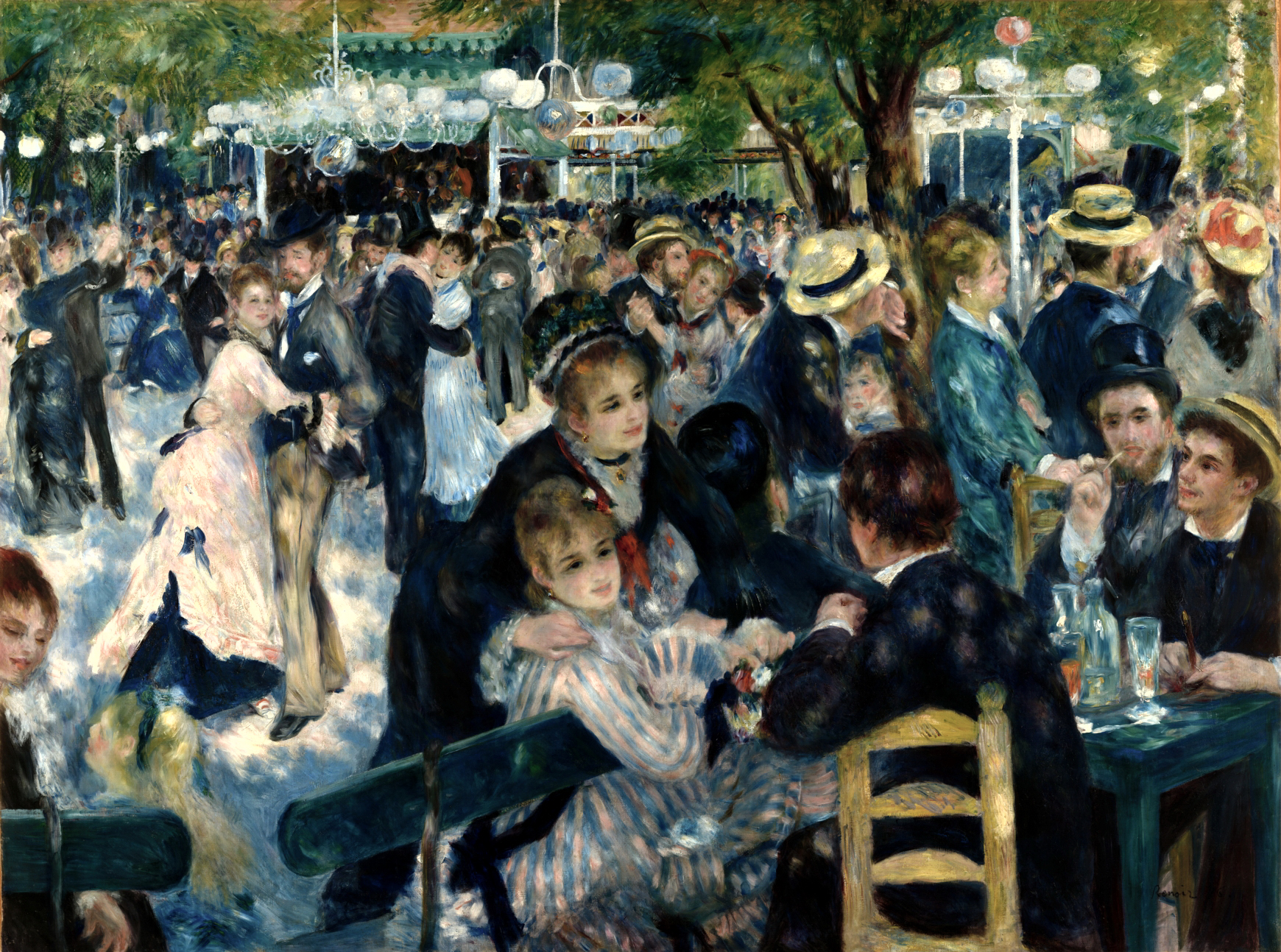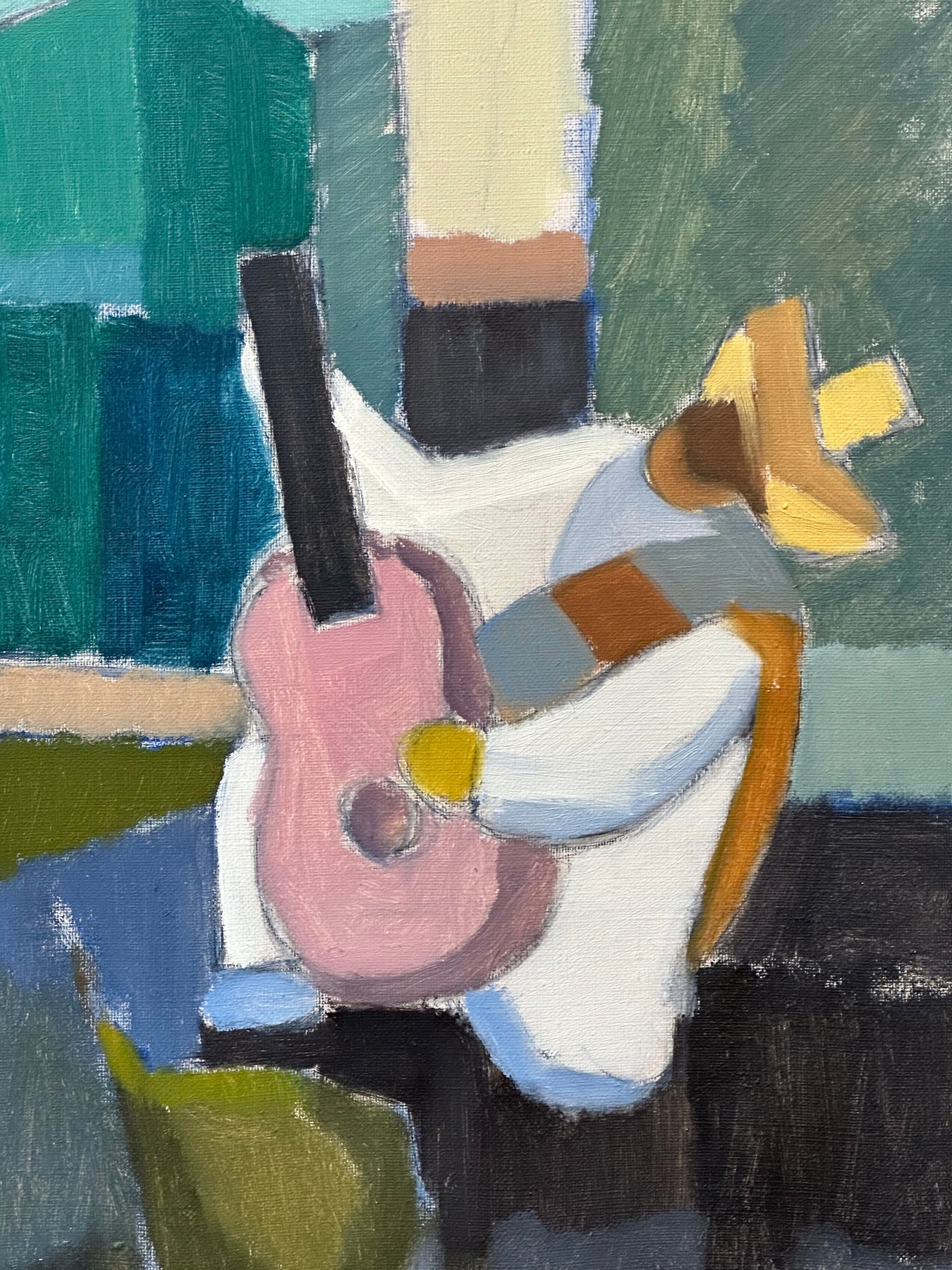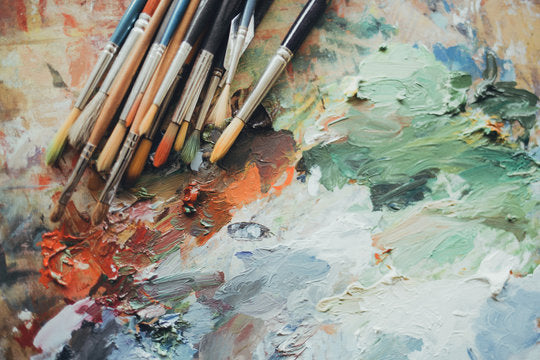What is 'en plein air' Painting?
One of the defining characteristics of the Impressionist artists is the technique of 'en plain air' painting, or in English, simply 'outdoor' painting. Many Impressionist painters focused on the beauty of French landscapes, with their fields of lavender flowers and rolling green hills. This approach makes us picture a lone painter, carrying their easel, canvas, and paints, and setting up in a field. However, we also think of this technique even when we look at still life paintings and portraits, regardless of whether they were painted outdoors or not. So why do we still attribute 'en plein air' to art that doesn't always fit the definition, and why do we still appreciate it as a technique? This article will be looking at the main characteristics of this approach to painting, what makes it so enduring, and how it has influenced art in the modern day.

One of the series Haystacks by Claude Monet, 1888-1891, Art Institute of Chicago
Any day: Seasons and Time of Day
Claude Monet's Haystacks, also know as The Stacks at Giverny, are an iconic series of paintings from 1888-1891 which simply depict haystacks in a wheat field. Monet chose to paint the same scene over and over again, using his canvases to study the seasons and the changing of light in the day. Most of the artworks were painted with this en plein air technique, meaning that he would situate himself in the landscape to paint the scene in real time. This sense of real time allowed him to see how the changing light would affect the positions of shadows and the saturation of colour. As well as this, the way in which the changing seasons affected the countryside landscape could be explored. Snow, frost, rain, and sunshine can be clearly seen in this series, which encourages us to marvel at the beauty of the seasons.

'Bal du Moulin de le Galette' by Pierre-Auguste Renoir, 1876, Musée d'Orsay
Anywhere
En plein air painting didn't even have to be done in the countryside; cityscapes and seascapes abound in Impressionist art repertoires, especially when we think of the paintings of the social gatherings of Paris by Pierre-Auguste Renoir. Here, in Bal du Moulin de la Galette, Renoir captures not only a certain time of day, but a certain place in a certain time in social history. Couples and friends gather to dance in the flickering light of sunshine through trees, making conversation, exchanging glances, and looking for potential suitors. Of course, it would be near-impossible to have painted these figures in real time, but the initial approach of en plein air painting provides a window into a place in time we can never return to, allowing us to see time unfold from the artists' eyes themselves.
'Calanques I', by Fortuné Car (1905-1970), oil on canvas, available at Collins & Green Art
By Anyone
There is something endearing and approachable about en plein air painting. One of the reasons why is that it provides a sense of spontaneity and improvisation; an artist has not necessarily had to painstakingly plan out a composition of an en plein air painting, nor have they had to use hours and hours of painterly techniques to create the final product. Of course, artists who chose and continue to choose this technique are certainly skilled and well-practiced, but there is something less grand and more heartfelt about a painting which has been created seemingly spontaneously in a short amount of time. We can picture ourselves 'having a go' at painting a landscape in real time, mapping out the perspective, and trying to capture the colour of what we see at a specific moment in time. This idea of the everyday and increased accessibility of art follows our understanding of what art is today- a method and approach to art which was pioneered by the Impressionists, which was why they were so controversial for their time.

'Claude Monet Painting by the Edge of a Wood' by John Singer Sargent, 1885, Tate Gallery, London
But is it true?
We know that not all en plein air painting were painted outdoors or even painted in a short amount of time. Even Monet's Haystacks were actually finished in his studio at home, as weather and lighting conditions often prevented a painting from being finished. Often, the en plein air approach was used to simply map out the painting in terms of perspective and general colour and lighting effect, then finished later in as much time as the artist pleased. The Impressionists were criticised for being 'amateur' painters because the idea of art at the time was that it was created in a studio under expertly applied painterly techniques, taught by the top art academies. However, en plein air became an approach and a style adopted by the most academic and trained painters of their time, such as John Singer Sargent.

David Hockney painting a landscape outdoors at his home in Yorkshire
Where can we see its influence now?
Often, in contemporary art, the en plein air painting technique is not a part of the final piece but a way of practicing painting techniques. Landscape paintings, for instance, are certainly not in fashion for contemporary artists, but they are a timeless way to not only appreciate art, but to admire the beauty of the outdoors itself. David Hockney is a modern and contemporary artist who, throughout his career, has embraced the approach of en plein air painting. His art is not necessarily emblematic of the Impressionist artists of time gone by, but his method and artistic practice has certainly been influenced by them. In addition, our understanding of art being accessible to all and created by anyone has been pioneered through the method of en plein air painting, meaning that our very understanding of art in the modern day has been shaped by it.
'South of France' by Gertrude Wrack Lindqvist (1905-1996), oil on canvas, available at Collins & Green Art. Notice the artist in the bottom right-hand corner painting en plein air.
Final Thoughts
En plein air painting is a wonderful painting technique used by artists for centuries and popularised by the Impressionists. I hope this article has shown you how influential it has been as an artistic method, shaping our understanding of what art is in our modern era, and how it is a technique that is timeless despite its Impressionist associations. En plein air painting is not always done outdoors, but rather it is an approach to painting an image as a window through a certain perspective, at a certain place at a certain time. This makes en plein air paintings of the past so exciting and enigmatic, as they literally allow you to see through an artists' eyes.
By Eloise Saggers, Collins & Green Art




